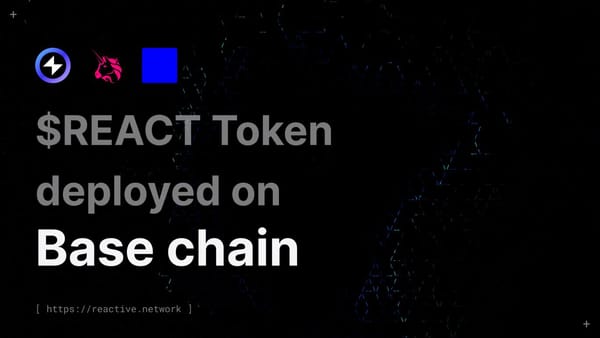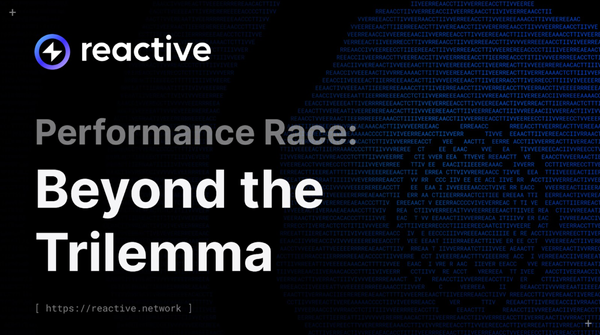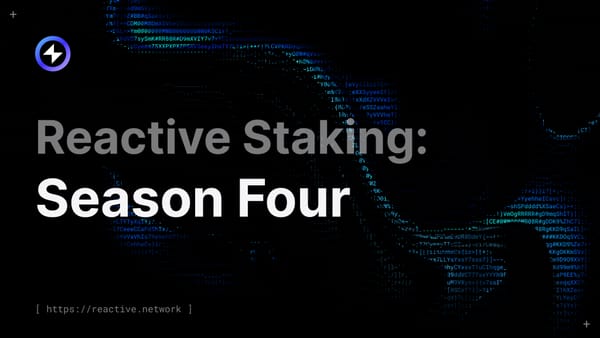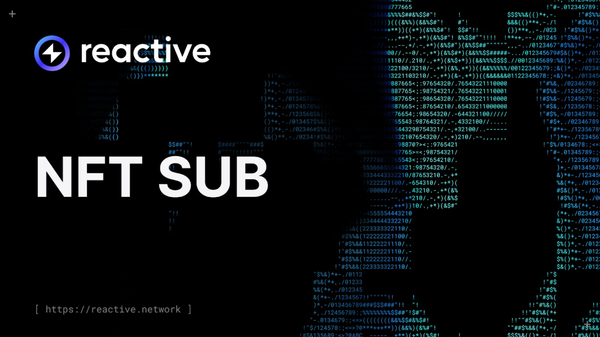Chainlink Automation & CCIP vs. Reactive Contracts
Chainlink's Automation and CCIP are powerful but complex; Reactive Contracts unify automation and cross-chain execution into a seamless, efficient solution.
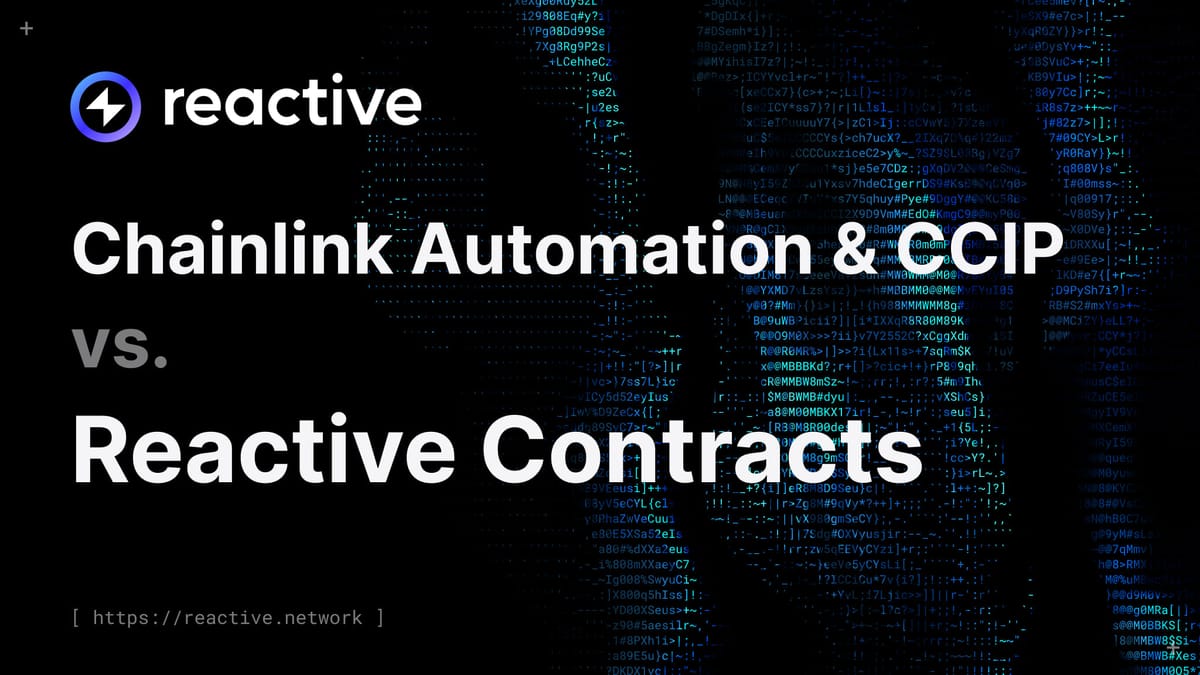
Chainlink is a well-known solution for automating smart contract executions and cross-chain interactions. It offers multiple execution modes, including Timed Automation, Log Automation, and Cross-Chain Interoperability Protocol (CCIP). While Chainlink's toolset covers various use cases, it also introduces complexity and fragmentation, as developers must work with separate interfaces for timed, event-based, and cross-chain functionalities. Additionally, Chainlink requires accessing a separate user interface (UI) through a browser to manage automations.
In contrast, reactive contracts combine all these capabilities into a single, unified contract, simplifying development and deployment. Reactive contracts achieve faster execution with less overhead while maintaining a high level of decentralization and flexibility. This article explores the differences between Chainlink’s solutions and reactive contracts, highlighting the practical implications for developers.
Timed Automation
Chainlink's Timed Automation uses scheduled intervals (or CRON expressions) to trigger smart contract functions. Developers must register their contracts as upkeep through the Chainlink UI, which involves providing the contract ABI, defining the trigger conditions, and funding the upkeep with LINK tokens.
While Timed Automation is suitable for scheduled tasks like reward distribution, it requires navigating Chainlink’s dashboard and configuring each upkeep separately. Reactive contracts, on the other hand, embed both timed and event-driven automation directly within a single contract, eliminating the need for multiple interfaces or external dashboards.
Setup Process
Step 1 – Deploy a Contract
Deploy a smart contract, ensuring it integrates with Chainlink's Automation framework. The contract should inherit Chainlink’s `AutomationCompatible` contract from the Chainlink Library.
Step 2 – Register as an Upkeep
- Navigate to the Chainlink Automation UI.
- Select "New Time-Based Trigger".
- Enter your contract address.
- If the contract is not verified, manually upload the contract ABI.
You can define when the contract should execute using either:
- A hardcoded time interval (set in the constructor).
- CRON expressions to schedule precise execution times.
Ensure your contract includes these functions:
- checkUpkeep – Returns a boolean (`upkeepNeeded`) and execution data (`performData`). If `upkeepNeeded == true`, the automation system will trigger execution.
- performUpkeep – The function executed when upkeep is due.
Step 3 – Configure and Fund the Upkeep
- Assign a name to your upkeep.
- Enter the number of LINK tokens to fund the upkeep (used for gas fees).
- Deploy the CRON contract to activate automation.
You can view execution history, gas usage, and fund allocation via the Chainlink Automation dashboard. You can also modify settings such as gas limits, funding, or pause/unpause the upkeep. Each execution logs timestamps and transaction details.
Log Automation
Log Automation tracks on-chain events and executes functions based on emitted logs. This is useful for scenarios like detecting leaderboard winners, but it introduces additional complexity as developers must specify log filters and manage ABI compatibility manually.
Chainlink requires separate interfaces for timed and event-driven automation, making the setup process cumbersome. Reactive contracts integrate both timed and log-based automation, providing a more straightforward solution.
Required Imports & Interfaces: The `ILogAutomation` interface must be implemented, which works similarly to the `checkUpkeep` function but relies on event logs rather than time-based triggers.
Check Log Functionality: Each upkeep call first executes `checkLog`, determining if upkeep is needed (`upkeepNeeded` is `true`). If `true`, `performUpkeep` is executed using the necessary `performData`.
Key Differences from Timed Automation:
- Log automation is based on emitted events, not scheduled intervals.
- The contract must specify which logs it listens to.
Setup Process
Step 1 – Deploy the Contract
Implement the `ILogAutomation` interface in the contract and deploy it to verify the integration with Chainlink’s Log Automation.
Step 2 – Register the Upkeep
- Navigate to the Chainlink Automation UI.
- Enter the address of the contract you want to automate.
- Enter the address of the contract that emits logs.
- Provide the ABI of the log-emitting contract.
- Select the specific log event you want to listen to.
Step 3 – Configure and Fund the Upkeep
- Register the upkeep.
- Assign a meaningful name to the upkeep for easy identification.
- Supply LINK tokens to fund the upkeep’s automation.
Just like with Timed Automation, you can view execution history, gas usage, and fund allocation via the Chainlink Automation dashboard. You can also modify settings such as gas limits, funding, or pause/unpause the upkeep. Each execution logs timestamps and transaction details.
CCIP
Chainlink's Cross-Chain Interoperability Protocol (CCIP) enables cross-chain interactions, offering two key capabilities: arbitrary messaging and token transfers. Unlike Chainlink Automations, which operate within a single blockchain, CCIP facilitates communication between different networks. However, CCIP introduces its own complexities:
- Separate UI: Developers must access the CCIP portal separately from the Automation UI.
- Token and Network Limitations: Only a limited number of tokens and networks are supported, varying by blockchain.
- Complex Setup: Developers must manage router addresses, destination chain selectors, and fee structures.
- Delays: Transactions often take several minutes, even for small token transfers.
In contrast, the Reactive Network allows users to list and transfer any ERC-20 token as needed. CCIP enforces strict limitations on supported tokens and networks, varying by blockchain — for example, Astar supports four tokens across two lanes, Arbitrum supports 57 tokens, B2 supports one, and Base supports 42 tokens.
One of CCIP’s strengths is its well-designed UI. For example, transferring from Ethereum to Sepolia offers two tokens: CCIP-BnM and CCIP-LnM. The difference lies in their mechanisms — CCIP-LnM locks tokens on the origin bridge and mints an equivalent amount on the destination chain, while CCIP-BnM burns tokens on the origin bridge before minting them on the destination chain.
Implementation
Integrating CCIP requires the following:
- Router Address: Import the `IRouterClient` interface and pass the router address to the constructor.
- Token Transfer Function:
- Manually approve the token before transfer.
- Follow the format specified in Chainlink’s documentation.
- Specify the destination chain selector and receiver address.
- On execution, the contract mints an equivalent number of tokens on the destination chain (e.g., Polygon, zkEVM, Cardona Testnet).
Here’s an example of a smart contract with the integrated CCIP:
CCIP supports arbitrary message passing, enabling encoded function calls alongside token transfers. This makes implementation significantly more complex compared to reactive contracts, as it involves handling cross-chain messaging, fee management, and transaction tracking via CCIP Scan.
CCIP supports flexible fee payments, including LINK tokens, native chain tokens (e.g., ETH, MATIC), and specific CCIP-supported tokens.
Recap
While Chainlink provides reliable cross-chain and automation solutions, its fragmented architecture and complex setup processes can be burdensome for developers. Reactive contracts offer a more elegant approach, combining automation and cross-chain capabilities into a single, cohesive contract. By minimizing delays and consolidating functions, reactive contracts provide a more practical solution for most use cases.
Key Comparisons:
Unified Interface: Chainlink uses separate interfaces for timed automation, log automation, and CCIP, while Reactive consolidates all functions into a single contract.
Execution Speed: Reactive contracts generally execute faster, with fewer delays and minimal overhead.
UI Dependency: Chainlink requires a separate browser-based UI, whereas reactive contracts are self-contained.
Decentralization: Chainlink’s nominal decentralization is sometimes inconsistent, while reactive contracts maintain a more reliable decentralized structure.
Multi-Chain Support: Chainlink supports many chains, but configuration and token support vary significantly. Reactive contracts offer more consistent support without chain-specific limitations.
User Experience: Chainlink has a well-designed interface that displays execution history and gas usage.
By consolidating features and reducing complexity, reactive contracts represent a more modern alternative to Chainlink's modular yet fragmented architecture.
About Reactive Network
The Reactive Network, pioneered by PARSIQ, ushers in a new wave of blockchain innovation through its Reactive Smart Contracts (RSCs). These advanced contracts can autonomously execute based on specific on-chain events, eliminating the need for off-chain computation and heralding a seamless cross-chain ecosystem vital for Web3’s growth.
Central to this breakthrough is the Inversion of Control (IoC) framework, which redefines smart contracts and decentralized applications (DApps) by imbuing them with unparalleled autonomy, efficiency, and interactivity. By marrying RSCs with IoC, Reactive Network is setting the stage for a transformative blockchain era, characterized by enhanced interoperability and the robust, user-friendly foundation Web3 demands.


